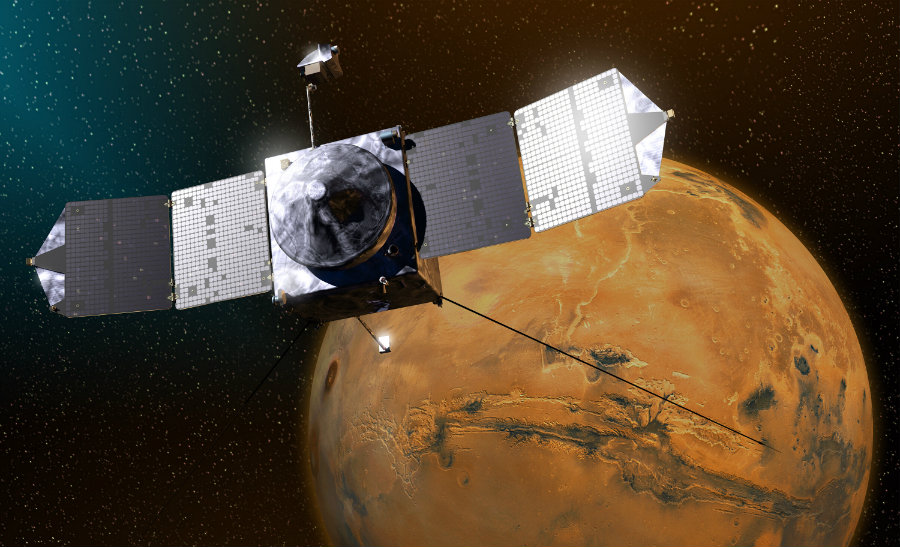This week, NASA showed its new generation Mars Rover, prepared for launch in 2020. Also, NASA showed a manned version of the rovers with a design that is inspired by Hollywood movies such as Tron; the new Mars Rovers are about 11 feet tall and 13 feet wide.
The first one was 40 years ago, hen the Viking one landed on the Martian surface sending the first images of that planet to Earth. The last one was in 2012 when the Curiosity was launched.
“Some of this was just for design. You know, just for it to look cool. Other things that I thought, you know, this is kind of important to have,” Shanon Parker said.

What is new about the new Mars rover?
The new design of the manned Mars Rovers has six wheels and an “alien” design. It is 11 feet tall, 24 feet long and 13 feet wide. The design was made by the Parker Brothers, Shanon, and Mac. These brothers became famous thanks to their designs for Hollywood movies, especially the futuristic ones, such as Tron. Therefore, they gave a Hollywood-like look to the new Mars rovers.
“There is almost nothing on this vehicle that was not built in our shop. I mean, down to every little bracket and tab, nothing was ordered out of a catalog. We built the body, the chassis, the suspension, the wheels, the frame, the interior, the seats, the glass — everything on this vehicle had to be built completely from scratch,” Marc explained.
They designed and constructed the whole thing in less than five months, and now the design has been unveiled by NASA earlier this week. The rover drives like an SUV. There is also a mock lab in the back in case astronauts want to do some experiments.
Marc said that they needed a good surface so when it gets into the sand, it won’t sink. The brothers consulted astronauts to create the design, but the machine is not going to Mars. It will be used to educate future scientists about Mars. This breath-taking exhibit will be public since June 5
Putting a foot on the red planet is closer than most people think
40 years ago the Viking One arrived on Mars. Right now there have been six unmanned missions to the Red Planet, but according to the astronaut Jon McBride putting a person on that planet is not so far away from our reality. He believes it can be done in 8 to 18 years.
“We think that the first man or woman on Mars is somewhere between 8 and 18 years old as we speak,” McBride said.

The schedule of NASA for the next years
There is a lot of things people still don’t know about the space. Much has been done, but there are certainly endless explorations pending and a universe to be discovered. NASA’s current missions are always trying to go beyond. This year, there are several tasks on the schedule including experiments in the ISS and different launches.
As well, this year NASA is expecting to launch its Deep Space Atomic Clock which keeps track of time and space. It will guide rockets in their travels to destinations that are far away; as well, it will help them collect data in a better way.
This month, the Cold Atom Laboratory will carry out individual experiments. In the ISS, they are testing something that can’t be done on Earth due to the quantum phenomena.
In 2018, NASA’s Interior Exploration using Seismic Investigations, Geodesy and Heat Transport mission – or inSight – will be launched. It will send new data back to Earth about Mars. It is scheduled to be launched on May 5 from the Earth, and it will arrive on Mars on November 28 next year. It will give access to scientists to information about how rocky planet emerge and how they develop over time.
The Parker Solar Probe – named after Eugene N. Parker the researcher who discovered solar wind – will also be launched next year and it will be the first one to touch the sun.
In 2019, NASA’s Space Launch System will take astronauts into deep space beyond the Earth orbit. In 2020, besides the launch of the Mars Rovers, NASA-ISRO Synthetic Aperture Radar will be initiated to study the conditions on planet Earth including the ecosystem disturbances such as earthquakes.
In 2021, NASA Asteroid Redirect Mission will remove a boulder from an asteroid. In 2022, NASA is bringing the Psyche mission which is the first to go to the metal asteroid that orbits between Jupiter and Mars. Scientists believe this could give more information about how planets are formed.
Source: International Business Times

What a badly written article. It’s like someone who doesn’t understand English copied and pasted a bunch of random sentences from NASA press releases.